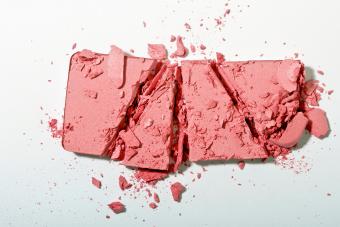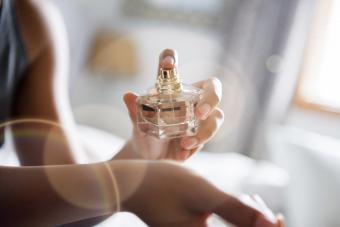
Being an everyday beauty staple for the majority of women, it's natural to wonder what makeup is actually made out of. Whether it's your occasional highlighter or favorite daily foundation, there are common ingredients found in each type of makeup.
Today's Cosmetic Ingredients
Even though cosmetic ingredients vary depending on the product, today's most popular makeup ingredients can be placed into the following categories:
-
Moisturizers - These attract moisture from the environment for a hydrating result.
-
Preservatives and antioxidants (including vitamins) - These prevent product deterioration.
-
Thickeners and waxes - These are used in stick products like lipsticks and blushers to obtain the correct texture.
- Antimicrobials - These fight bacteria.
- Solvents - These are used to dilute other ingredients.
- Emulsifiers - These break up and refine the texture of a product.
- Color additives and pigments - These create the desired hues.
- Anti-caking agents - These improve the texture of the product to avoid it looking and feeling cakey.
Even though the law doesn't require cosmetic products and ingredients to have FDA approval before they to go to market, it does require proper labeling and consumer transparency. Color additives are the exception as these types of ingredients must always be approved by FDA.
Ingredients in Foundation

All foundations, whether they are a liquid, powder, stick, or cream, contain three basic groups of ingredients: moisturizers, colorants, and fillers. However, it depends on the formula as to what other ingredients are involved. For instance, pressed powders or minerals usually don't contain water, while liquid foundations match the ingredients found in lotions and creams. Specific types of foundations also include ingredients to help with target areas:
- Hydrating formulas for dry skin - These contain moisturizing ingredients like glycerides, squalane, and oils (including jojoba, sesame, and avocado oils).
- Shine-control formulas for oily skin - These contain absorbing powders such as silica, alumina, cornstarch, and talc.
- Anti-aging formulas - These combine a powerful hydrator, hyaluronic acid, with peptides and botanicals that hide wrinkles and plump up your skin.
Mascara Ingredients

All mascaras include specific ingredients that will work together to lengthen and thicken your lashes such as:
- Carbon or iron oxide - These are metallic pigments that darken the lashes. Carbon produces a black hue, and iron oxide results in brown.
- Triethanolamine - This is an emulsifier that allows mascara to stick to your lashes.
- Waxes and polymers - These form a film to thicken lashes.
- A preservative such as phenoxyethanol - This prevents microbe contamination.
- Water - This helps to create the liquid formula.
What about waterproof mascaras? They swap water for a silicone like cyclopentasiloxane, which repels moisture.
Ingredients in Eye Shadow

No matter what the color, all eye shadows contain fillers like talc and mica as the two main ingredients. They also feature the following:
- Binders such as zinc stearate or kaolin clay - These hold the formula together so that the shadow sticks to your eyelid.
- Bismuth oxychloride and dimethicone - These work together to make sure the shadow glides over your skin and stays put.
- Iron oxides known as "Colour Index 77510" or "Blue 1 Lake" - These are colorants that give the shadow its hue.
When it comes to formula, cream shadows add waxes and oils to the base, whereas stick forms contain waxes, binders, pigment, and emollients to obtain the right texture.
Blush Ingredients

Named as such because it brings a flush of color to your cheeks, blush is made by relying on FDA-approved colorants. The creation of this makeup product follows a specific process:
- Three or four colorant pigments are combined to produce a shade.
- Fillers, such as talc and stearic acid (a natural fatty acid), are added to dilute the pigments.
- Concealing pigments, such as mica, zinc oxide, and titanium oxide, are included to block out your natural skin color. This makes the blush bright and vivid when it's applied to your cheeks.
Lipstick Ingredients

No matter what the hue, all lipsticks contain three main main ingredients: wax, pigment, and oil. There are other ingredient variations depending on lipstick type.
- For instance, long-wear lipsticks contain volatile solvents that deposit the pigment and flash off. Oils, emollients, and "wet" ingredients are purposefully missing to stop the pigment from sliding around.
- Similarly, pearl essence can be found in lipgloss to give the formula its shine. This is produced by combining naturally-formed mineral mica with a thin layer of titanium dioxide.
- When it comes to moisturizing lip balms, hydrogenated vegetable oil is often used as an ingredient to soften your lips.
Locating Makeup Ingredients
Each makeup product varies in ingredients depending on its texture, color, and required properties. If you're looking for the ingredients for a specific product, simply check the packaging. Alternatively, if you're shopping online, there will be a section on the product page where you will find a list of ingredients. Either way, you can rest assured that all of today's popular cosmetic ingredients are safe, as required by FDA law.







